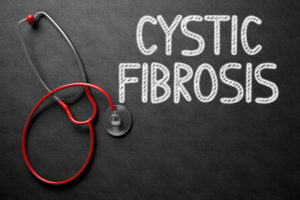
Newborn screening is an important step toward securing an infant’s health and future quality of life. This screening can tip off parents and doctors to a host of potentially serious conditions. Unfortunately, the newborn screening for cystic fibrosis can be wrong.
These inaccurate results can come in different forms. While most wrong results involve a false positive, some children also receive false negative results on their cystic fibrosis screens. Given the potential consequences of cystic fibrosis, it is vital that medical professionals recognize false results and ensure their diagnosis is correct.
Understanding the Newborn Screening Test
Newborn screening is a common practice for infants born in the United States. According to the Centers for Disease Control and Prevention (CDC), these screenings are mandatory in most jurisdictions. This screening involves a blood test that highlights identifying factors for several serious disorders and diseases. This single screening can inform parents of the odds their child has 30 or more of the most common or dangerous congenital diseases.
There is not a standardized form for a newborn screening test. However, every state mandates some form of the newborn screen. Each state will determine which diseases and conditions they test for. These screenings focus on an array of health conditions, including hormone or hemoglobin problems. Issues with the child’s metabolism like phenylketonuria is also frequently part of these screenings. Screening for cystic fibrosis is also a common part of these initial tests.
Newborn screenings all generally follow the same pattern. The screenings typically occur at least 24 hours after the birth of a child, but no more than two days after the birth. A small blood sample is usually drawn from the infant’s foot. This sample provides enough blood to screen for all the conditions screened for under each state’s guidelines. Results are usually available in less than one week.
"If your child was born with a birth injury, or cerebral palsy, we can help."
The Potential for a Newborn Screening Test to be Incorrect
It is important to remember that these are screenings for potential indicators of diseases or other conditions, not in-depth testing for every condition listed in the screening. If a child has a positive result on their screening, the next step is to confirm the diagnosis.
According to National Institutes of Health (NIH), there are a number of factors that can lead to a false screening result. Some of them are simply mistakes, like mixing up samples or failing to collect an adequate amount of blood. Errors made by the testing lab are also frequently to blame. These could include mislabeling issues or the failure to properly analyze mutating DNA.
Finally, some false results occur due to carelessness on behalf of the treating doctor following the test. In some cases, doctors misread results or mistakenly advise parents inaccurately.
Newborn Screening Can Produce Incorrect Results for Cystic Fibrosis
Because of the potential for false testing, especially false positives, there is a constant need for more in-depth evaluations. After all, the results of the newborn screening only indicate whether a result is normal or abnormal. An abnormal result on the cystic fibrosis screening does not guarantee that a child has the disease. It can be little more than a false positive result, or it could be a sign that the child is a carrier but does not have cystic fibrosis.
Following an abnormal result for cystic fibrosis, doctors rely on what is known as a sweat chloride test. Instead of testing the child’s blood again, this test is used to evaluate a sample of the baby’s sweat. According to the Cystic Fibrosis Foundation, babies who received an abnormal test should have a sweat test by the age of four weeks to ensure any health issues are found and can be treated quickly.
The purpose of the test is to measure the amount of chloride in the child’s sweat. High levels of chloride can indicate several conditions, including cystic fibrosis. The test has multiple steps, including a 30-minute warming period to ensure the infant produces sweat. Electrodes are also applied to the body prior to the collection of the sweat samples. Often, multiple attempts are needed to collect adequate samples. Once a lab evaluates the sweat samples, the results are shared with the doctor and the child’s family. With a positive test, the doctor could order additional tests to confirm the diagnosis.
"We know first-hand what you are going through."
Contact the Office of a Birth Injury Attorney to Discuss Your Legal Options Today
The potential for false positives or negatives on a newborn screen is already substantial. When a newborn screening for cystic fibrosis is wrong due to medical mistakes, the negligent doctor or nurse could reduce an infant’s chances for a comfortable life significantly.
If your child was misdiagnosed with cystic fibrosis, you have the right to hold the negligent medical professionals accountable. Learn more about pursuing legal action by calling the Birth Injury Lawyers Group at (800) 222-9529 to schedule a free consultation today.
"We are committed to helping families who have suffered medical negligence."
